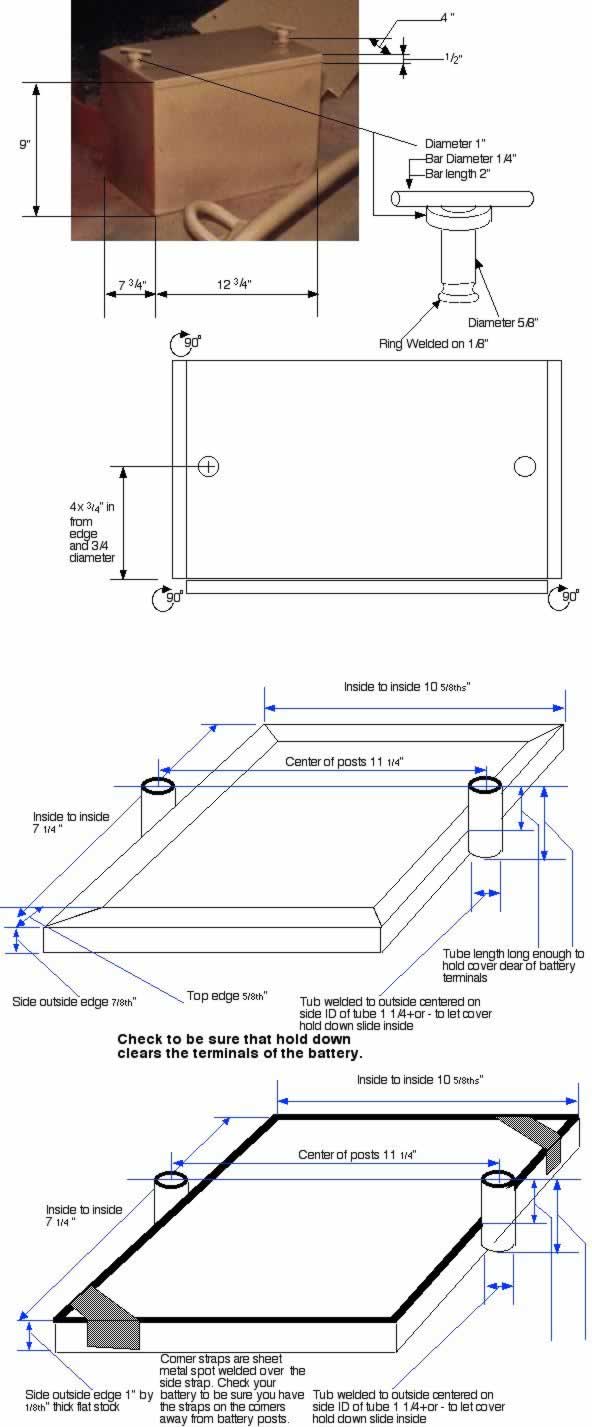
Pictures of the battery box as used on the Chev Pattern 13 Cab, I have three different battery boxes and hold downs and they are all slightly different.

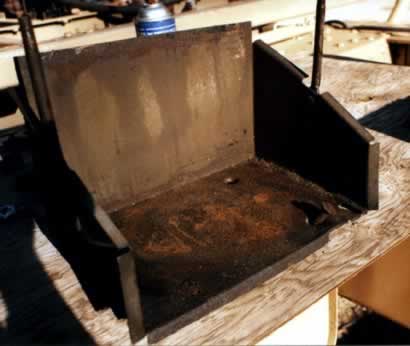
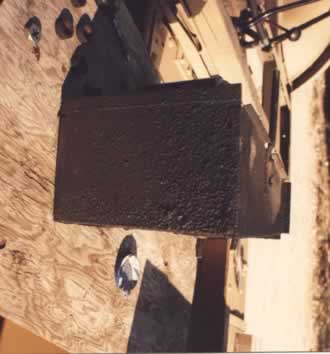

Drawing of the lower battery box tray this is bolted to the door step under the drivers seat. There is also a battery hold down spacer that I will add a photo of as soon as possible. If needed I can also provide a drawing of the cover. On my C60 I extended the battery tray, lower section, back by 7 1/2 inches this to hold a 12 volt deep cycle battery to power radios and lights in the back. This solves the problem of keeping the original 6 volts system while still operating modern CB and VHF truck to truck radios as well as a tape deck. See further down the page for the next generation of drawings.

Different Valve Covers Used on Chevy 216 Engines
|
The Chevy Pattern 12 has the oil filler located at the front of the cover, the filler tube is basically a straight section of tube with a gas tank filler cap at the top. The filler tube is extended for the simple easy of adding oil. What is of course interesting is that on dip stick is on the side so that you have to check it then climb up to add oil. This was changed on the Pattern 13 trucks to allow you to check the oil level and add oil with out get out of the Cab. |
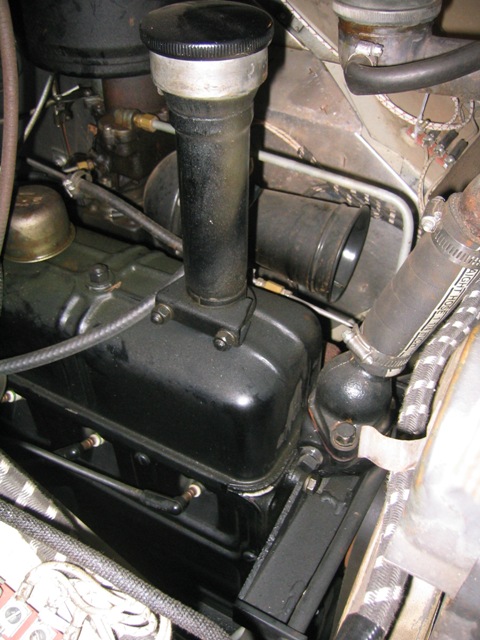 |
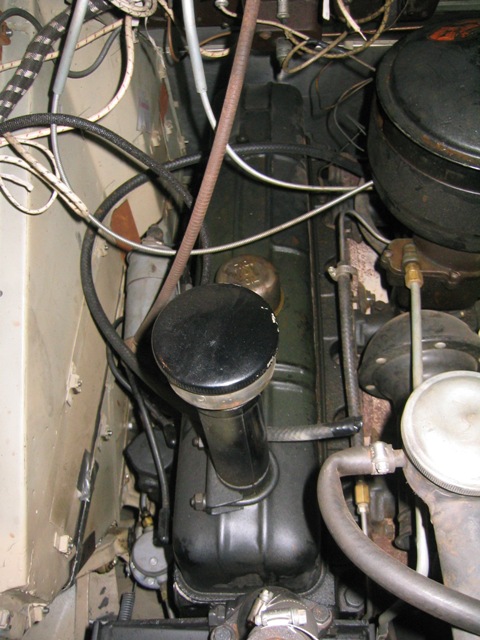 |
| Patter 12 engine before installation, this is actually a 1953 block and head to which all of the 1941 Pattern components have been bolted without modification. |
|
|
|
1942 Marks the introduction of the Pattern 13 design. Major changes are obvious in the shape of the Cab but some more important changes come in making it easier to service the engine with a easily removed engine cover. While the Pattern 12 has something like 84 bolts to completely remove the engine cover. The Pattern 12 Engine Cover is held in place with TWO spring loaded clips. (See Engine Cover or Dog House)
In this picture the unit at the center of the cover is a small oil bath aircleaner to help remove the dust that would other wise be drawn into the engine. This was one of the many changes made as a result of the lessons learned in North Africa. |
 |
 |
|
Now as to Civilian Chevy 216 valve covers- there is a high level of interchangablity from 1938-1954 with later covers even be adaptablity For use on CMPs a the venting slots on most civilian covers will need to be welded up but this is relative easy sheet metal work. The slots face to the rear of the engine. While reversing the cover would seem to be answer for front or rear filler location the lip on the spark plug side prevents this.
|
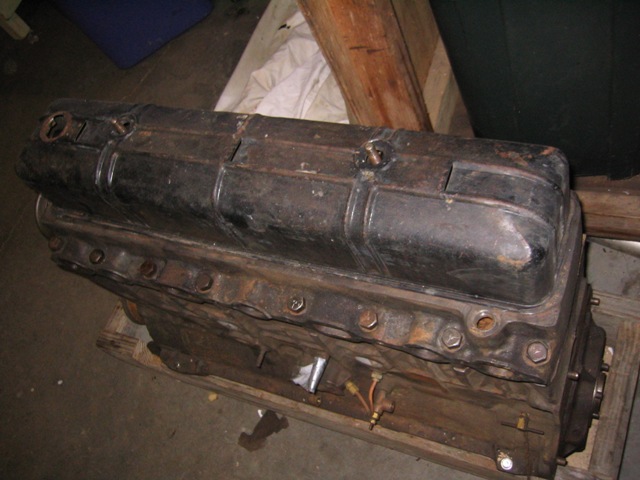 |
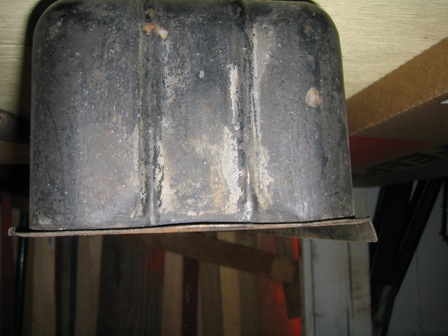 |
|
The best conversion candidate is a civilian cover that has no filler hole in the cover. These engines had the oil filler tube down on side of the engine just in front of the distributor. When equipped with a filler on the valve cover it usually of the twist in time that also serves as an breather tube. It is neither dust or water proof. But the hole is smaller than the tube design used on CMPs so the conversion is simple. |
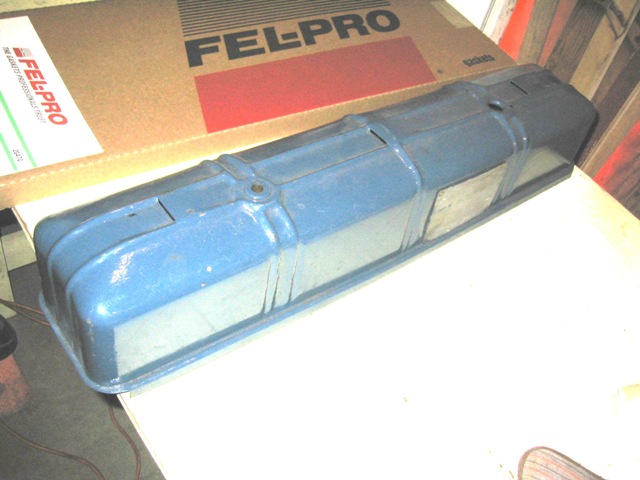 |
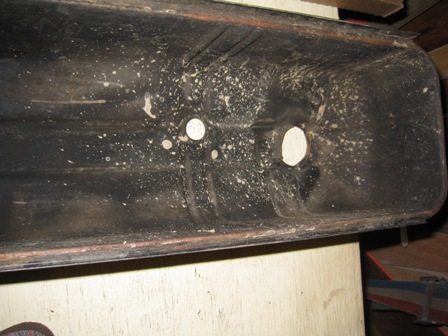 |
|
Dec 2012 Update The question about battery box for Chevy Pattern 13s has come up a couple of times since the drawing earlier on the page was posted. In the first of these discussions Jason Meade came up I did an updated drawing with more dimensions. In the process of e-mail's back and forth these dimensions got refined and corrected. Jason then involved his good friend Pat Newman who corrected the drawings and did a great CAD version of them. In looking at my hand drawings now and the earlier drawing you will note some minor differences. Why the difference? A couple of reasons First. I'm working from three different batter box units, all slightly different in fabrication method. Drawing mid page was made with a single sheet of steel forming back, sides and bottom, while the other two boxes were made using three separate pieces to form the same part. Second none of the original boxes are perfect the dimensions from one end to the other vary +/- 1/8". Many thanks to Jason and Pat for aiding in presenting better drawings. Also my thanks to Svenn Ryen for reminding me to update the information. Hope this collaborative effort is of use to others. |
||
 |
||
 |
||